Radial pleated dome
Here are some models which illustrate the use of a radial
pleating pattern:
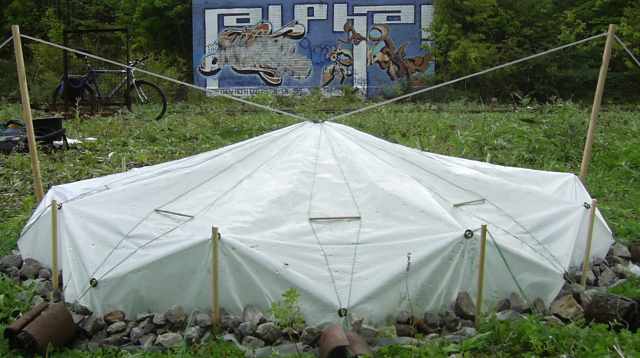
Radial pleated suspended fabric dome |
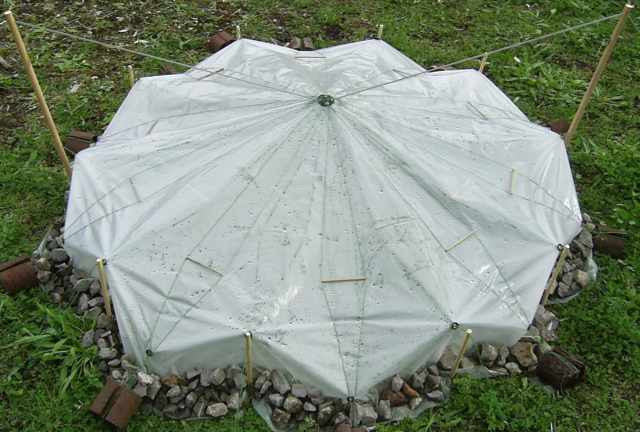
Radial pleated suspended fabric dome |
This model was constructed from a single flat sheet of polythene.
It makes use of the idea of blunt pleating.
There's an essay about this dome here.
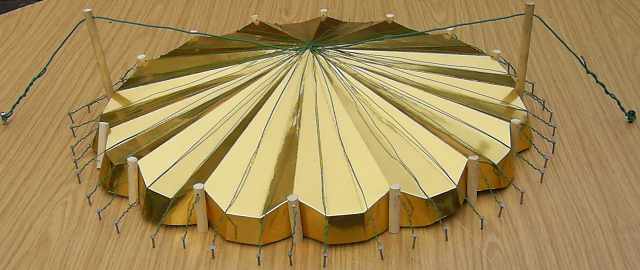
Radial pleated suspended card dome |
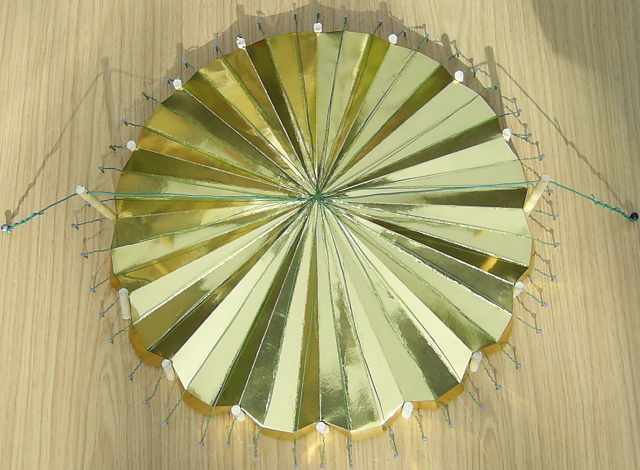
Radial pleated suspended card dome |
This model was constructed from a single flat sheet of gold-
covered cardboard.
It uses a variation of the
basic conical pleating pattern -
with a "one up, two down" pattern - reminiscent of the pattern used in the
wildwalk roof canopy.
These domes are all suspended - to produce a large internal
clear span, uninterrupted by any supports.
Use of pleating potentially allows for relatively low
profile roofs, with little chance of ponding.
The main idea here is to produce a low cost
construction.
Costs are reduced by eliminating the need for patterning of
the fabric - and by the use of simple poles for all
structural elements.
Large single flat sheets of waterproof material are
available for applications such as building polytunnels and
lining ponds. These applications are common - resulting in
good availability and low cost.
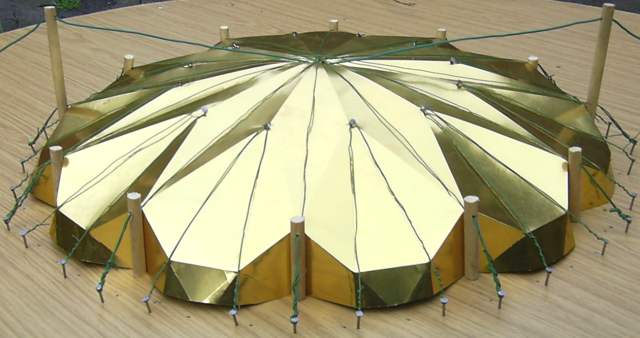
Radial pleated suspension/aspension card dome |
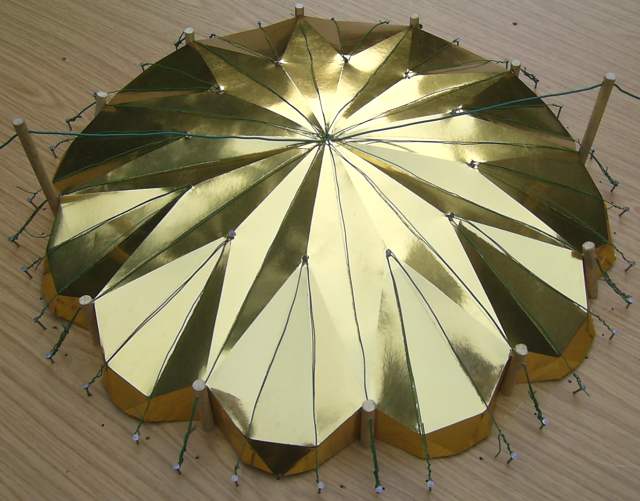
Radial pleated suspension/aspension card dome |
This model was constructed from a single flat sheet of
gold-covered cardboard.
The model uses floating masts to stabilise against second-
and third-harmonic diaphragming - and create a more rounded,
dome-like shape.
This model illustrates how it would be possible to create a
pure aspension design. Such a design would be heavier, more
expensive, and would not be so good at creating large spans
- but it would dispense with the external supports required
for a suspended design.
There's an essay about this dome here.
Suspension alternatives
There's a brief essay about possible ways of supporting
domes like these here.
Insulation
Insulation could be done in one of two ways:
- Seal two sheets together around the edges - and inflate;
- Make two cable networks above each other.
Mold for concrete/foam
A twin-skinned version of this design may have applications
as a mold for those constructing out of concrete, cement, or
foam.
The mold is not an ideal shape - since the
resulting dome fails to take full advantage of the strength
of synclastic curvature.
However, a fully-formed twin-skinned 3D mold is
produced relatively easily and inexpensively.
Prototypes
A page of prototypes for these models is available.
Gallery
More images of all these structures are available in the associated
[gallery].
Credits
I produced these designs after observing the clear span
round agricultural structures at
[Brithdir Mawr]:
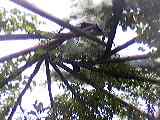
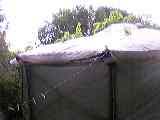
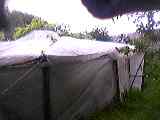
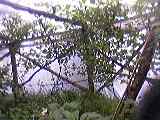
Brithdir Mawr grape house |
These structures use what is known as a reciprocal frame roof.
I also observed
[the house of their designer, Tony Wrench]:
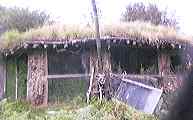
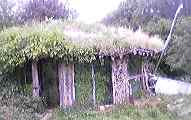
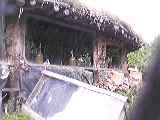

Brithdir Mawr round house |
...which has a roof made from - among other things - a rubber pond liner.
More photos of the roundhouse can be found here.
|